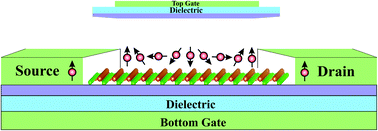Conflux of tunable Rashba effect and piezoelectricity in flexible magnesium monochalcogenide monolayers for next-generation spintronic devices†
Abstract
The coupling of piezoelectric properties with Rashba spin–orbit coupling (SOC) has proven to be the limit breaker that paves the way for a self-powered spintronic device (ACS Nano, 2018, 12, 1811–1820). For further advancement in next-generation devices, a new class of buckled, hexagonal magnesium-based chalcogenide monolayers (MgX; X = S, Se, Te) have been predicted which are direct band gap semiconductors satisfying all the stability criteria. The MgTe monolayer shows a strong SOC with a Rashba constant of 0.63 eV Å that is tunable to the extent of ±0.2 eV Å via biaxial strain. Also, owing to its broken inversion symmetry and buckling geometry, MgTe has a very large in-plane as well as out-of-plane piezoelectric coefficient. These results indicate its prospects for serving as a channel semiconducting material in self-powered piezo-spintronic devices. Furthermore, a prototype for a digital logic device can be envisioned using the ac pulsed technology via a perpendicular electric field. Heat transport is significantly suppressed in these monolayers as observed from their intrinsic low lattice thermal conductivity at room temperature: MgS (9.32 W m−1 K−1), MgSe (4.93 W m−1 K−1) and MgTe (2.02 W m−1 K−1). Further studies indicate that these monolayers can be used as photocatalytic materials for the simultaneous production of hydrogen and oxygen on account of having suitable band edge alignment and high charge carrier mobility. This work provides significant theoretical insights into both the fundamental and applied properties of these new buckled MgX monolayers, which are highly suitable for futuristic applications at the nanoscale in low-power, self-powered multifunctional electronic and spintronic devices and solar energy harvesting.



 Please wait while we load your content...
Please wait while we load your content...